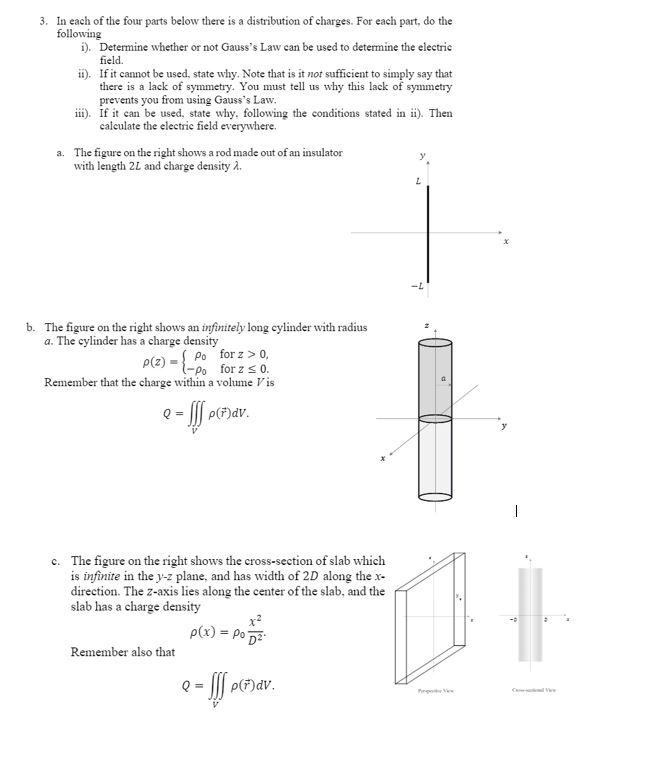
3. In each of the four parts below there is a distribution of charges. For each part, do the following i). Determine whether or not Gauss's Law can be used to determine the electric field i). If it cannot be used, state why. Note that is it not sufficient to simply say that there is a lack of symmetry. You must tell us why this lack of symmetry prevents you from using Gauss's Law. iii). If it can be used, state why, following the conditions stated in ii). Then calculate the electric field everywhere, a. The figure on the right shows a rod made out of an insulator with length 2L and charge density i. 2 b. The figure on the right shows an infinitely long cylinder with radius a. The cylinder has a charge density po for z > 0 Remember that the charge within a volume Vis p(z) = {- for z so. p = prav. 1 c. The figure on the right shows the cross-section of slab which is infinite in the y-z plane, and has width of 2D along the x- direction. The Z-axis lies along the center of the slab, and the slab has a charge density °D2 Remember also that p(x) = POD P = Mav.
没有找到相关结果